Herbs are the stars of the kitchen garden, adding strong tastes, aromas, potential health benefits, and overall zing to your cooking, homemade tea blends, and more.
They make good companion plants for your vegetables, too.

We link to vendors to help you find relevant products. If you buy from one of our links, we may earn a commission.
But if we thought about companion planting within your herb garden, a whole slew of questions might crop up.
Is it worth figuring out what types to plant beside or with what? Which plants work well together, and which don’t get along?
We have all the answers laid out for you below. Here’s what we’ll talk about in this article:
What You’ll Learn
What Is Companion Planting and Why Bother?
Companion planting is the practice of intentionally planting certain plants together for the benefit of one or both. You may have heard or read about companion planting in your vegetable garden.
Usually, one plant will help to repel a certain pest from another, attract a pest to itself and save the other via trap-cropping, provide shade, or any number of other benefits.
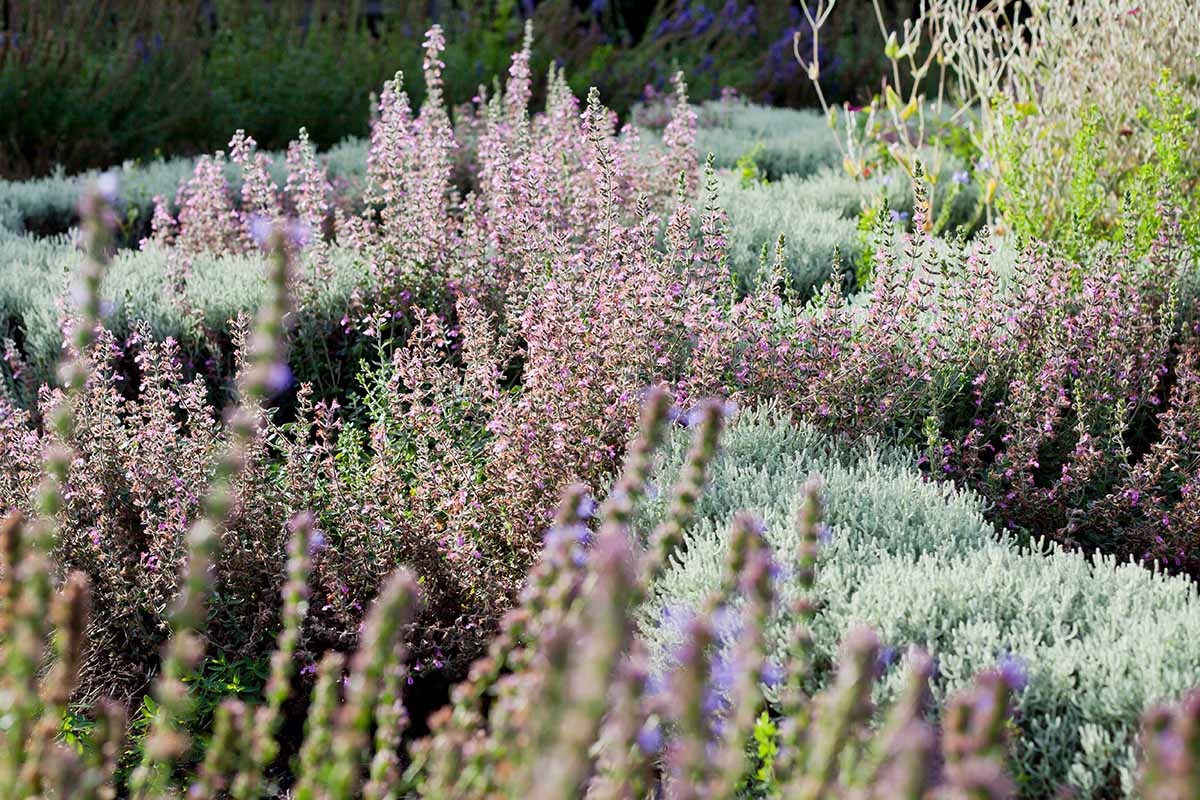
Herbs are well known to be powerful companions for vegetables. Plus, they can be delicious when picked and eaten together.
The trouble is, especially when plants with such strong scents and flavors get together, they don’t always use their power for good.
Some will potentially ruin the taste of others, or hinder their growth. The trick is to find the perfect combination that will enhance or benefit one or both parties.
When you get it right, the benefits are worth the trouble of figuring out which to plant together.
Some herbs, such as tarragon, may enhance the taste and aroma of others. They can attract beneficial insects, repel pests, and enrich the soil, and planting a good variety of them results in a diverse garden.
More on the benefits of companion planting can be found in our article on this very subject!
Considerations
Before chucking a bunch of seeds out into your garden or container, consider the following to help you determine which will work best together.
Growing Conditions
In general, herbs that have a similar growth rate and like the same growing conditions – such as soil moisture, type, and pH, as well as temperature and light levels – will do best near each other.
There’s a simple reason for this: given the right growing conditions, a plant will flourish.
Herbs can be grouped in several ways. You can look at the plant family, for example.

One such family is Lamiaceae, which includes a wide variety of plants with aromatic leaves like basil, oregano, thyme, sage, and lavender. These can tolerate some heat and drought.
Compare that with Apiaceae members, which require moist, deeper, and looser soils, such as dill, cilantro, and parsley.
Some expert gardening sources name groups based on origin and growing preferences.
For example, Mediterranean herbs, including lavender, oregano, marjoram, rosemary, sage, and thyme, tend to do well together, as they require many of the same growing conditions.
So-called “damp” types, which include basil, cilantro, tarragon, and parsley, are good matches as well.
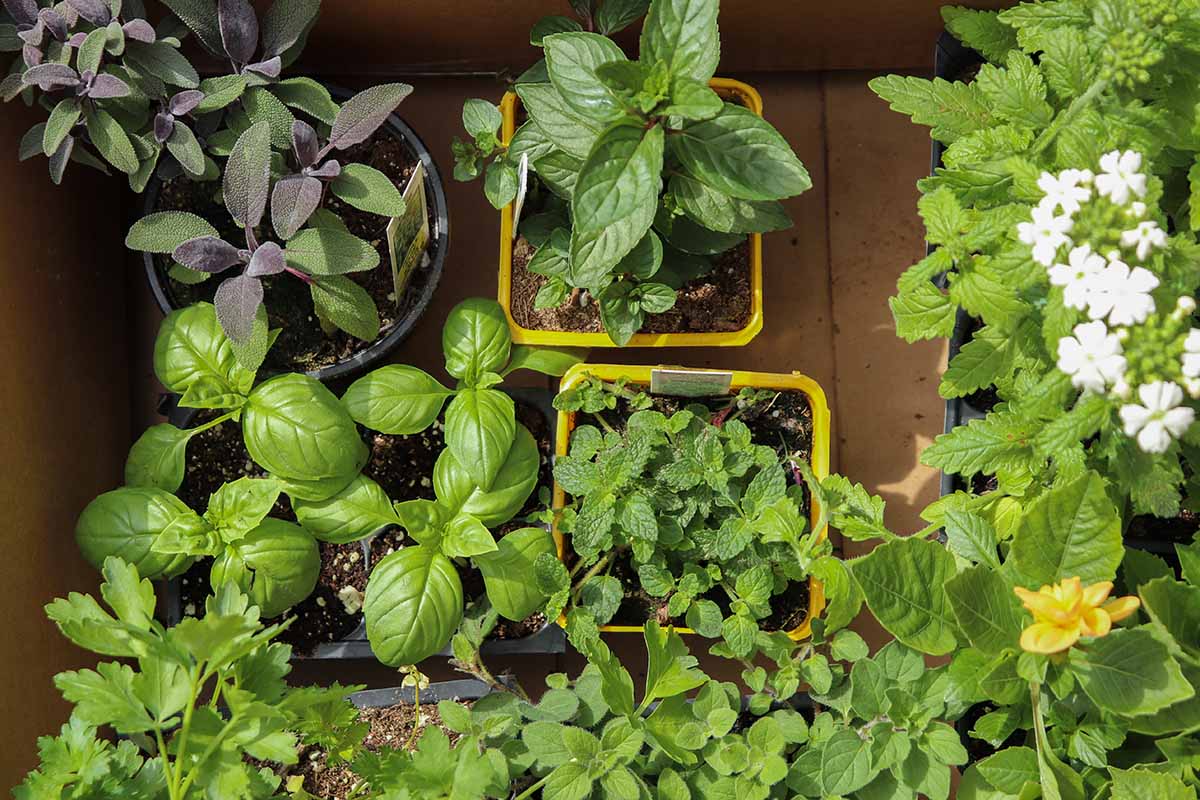
You might have noticed that there is some overlap in which herbs go well with which when grouped by family or preferred growing conditions.
Knowing which plants go well together in their native environments or based on their genetic similarities is helpful, as this information can be translated to suit your own local growing conditions.
But incompatibilities are an important consideration as well.
Compatibility
When I look at a companion planting chart or list, my head starts to swim with the wealth of information, and I don’t know where to start.
Sometimes it’s easier to plan the enemies’ and lovers’ placement in the garden first.
Simply put, there are many herbs that are just platonic friends, or in more scientific terms, compatible. These can be filled in once you’ve got the incompatible feuding and super compatible herbs’ placement figured out.
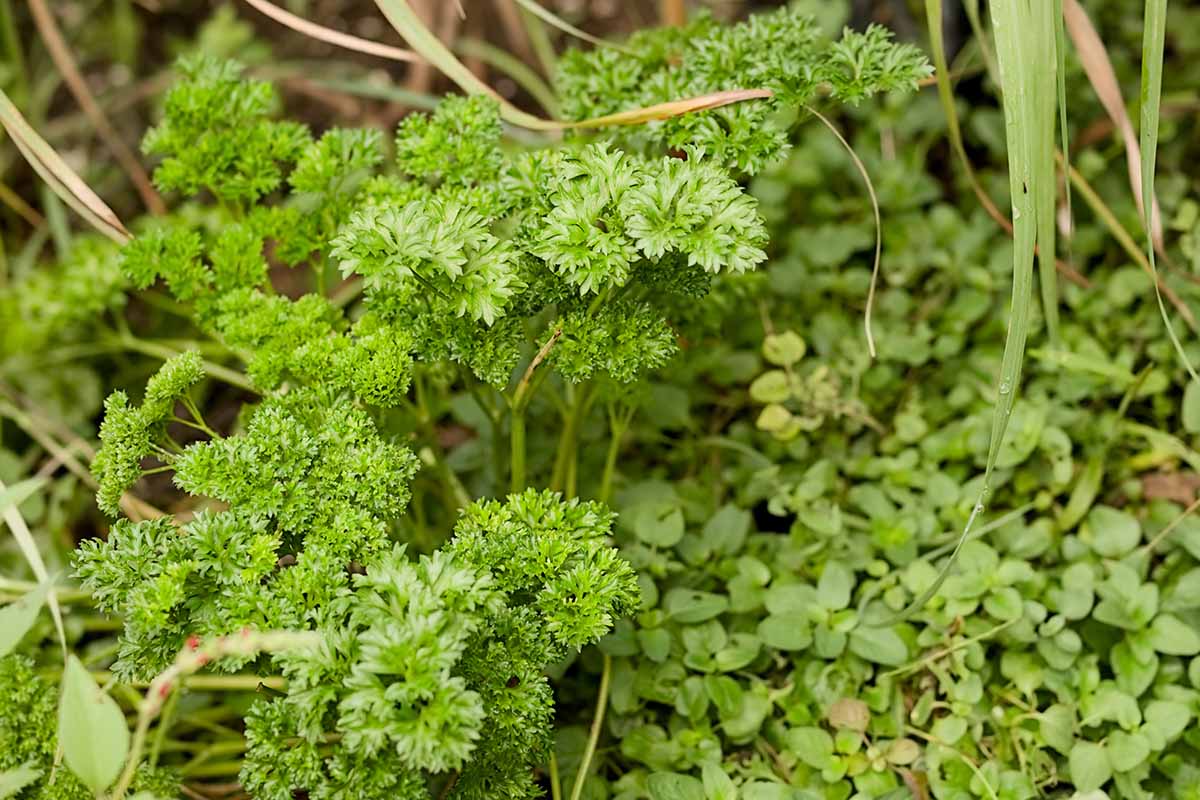
Dill, for example, can attract pests that harm lavender.
Plus, dill and lavender’s soil preferences are on opposite ends of the pH scale, with dill preferring more acidic soil, and lavender requiring something more alkaline. Dill and sage are also not a good combo.
Anise, on the other hand, is said to increase cilantro germination rates, so if you’re starting the latter from seed, keep that in mind.
Mint and parsley are enemies. Mint’s growth is so aggressive that it should be planted alone or perhaps with oregano. Most other herbs won’t stand a chance against its invasive growth, so it’s a good idea to plant it in a pot by itself.
Rue, sage, and basil are a trio of nemeses. They can damage and inhibit each other’s growth. But oregano and chamomile like basil fine, so go ahead and pair them up with it.
Fennel can change other herbs’ flavors, and not in a good way, so keep it at a distance.
Recommended Herb Combinations
There are plenty of charts available to reference when deciding which plants to cozy up to others in your garden, as I mentioned before.
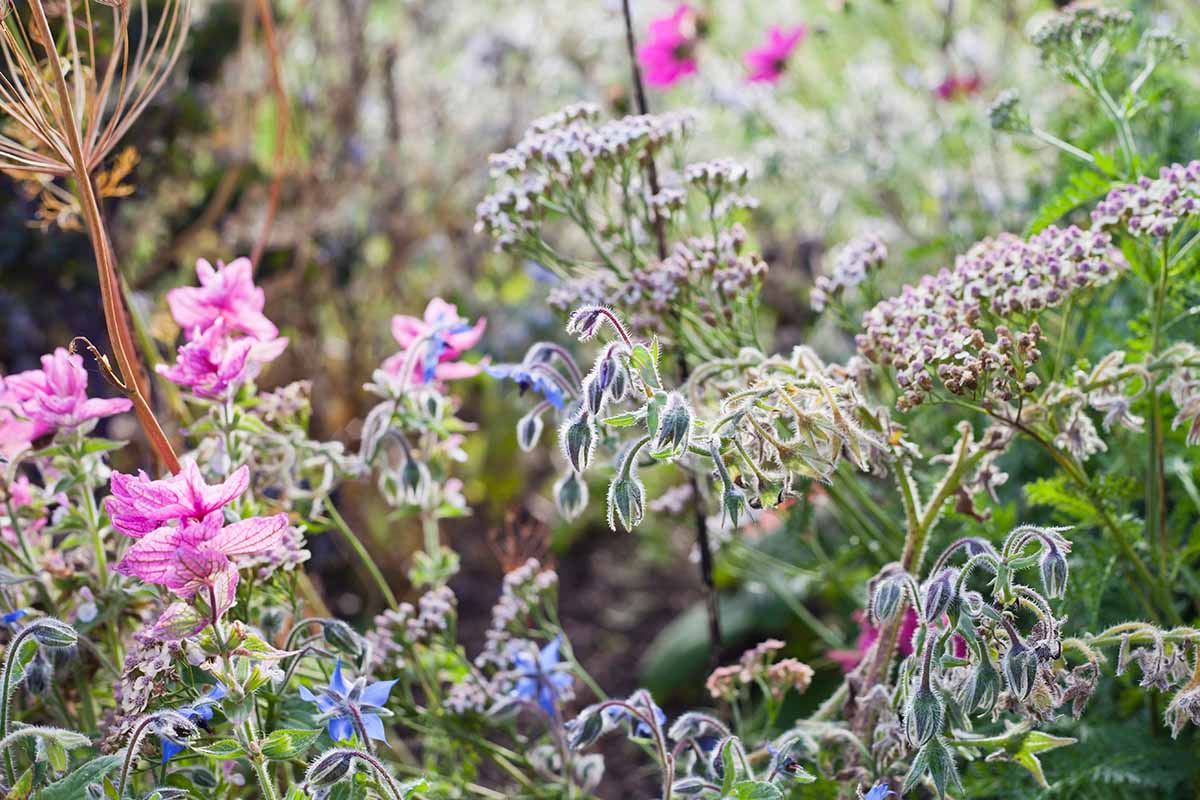
For example, you may find a list that says to grow bay near rosemary, sage, thyme, and parsley. Or tarragon with lemon balm, lemon thyme, rosemary, sage, and parsley.
The possible combinations are nearly endless.
Parsley is one with many friends, and it can be planted near marjoram, oregano, rosemary, sage, savory, thyme, basil, chives, lavender, lemon balm, and lovage.
Thyme, rosemary, and sage’s companion lists are similarly long and diverse.
Overall, these long lists tend to make my head spin, so let’s try to simplify things here.
In general, if you consider sworn enemies and preferred growing conditions, try these combinations when you’re getting out your gardening journal and planning what you’ll sow:
- Rosemary, oregano, sage, thyme, lavender, and marjoram combine well together
- Basil, parsley, cilantro, and tarragon are friends
- Keep mints with mints
Of course, depending on where you look, different sources will recommend different combinations.
Thus, the best thing to do is experiment in your kitchen garden to figure out what combinations don’t work, and which work best in your specific conditions.
You may find certain groupings that aren’t listed here or elsewhere work beautifully with your personal growing style and local conditions.
Grow a Flavor Garden
Purposeful companion planting can provide a range of benefits in the herb and vegetable garden alike.
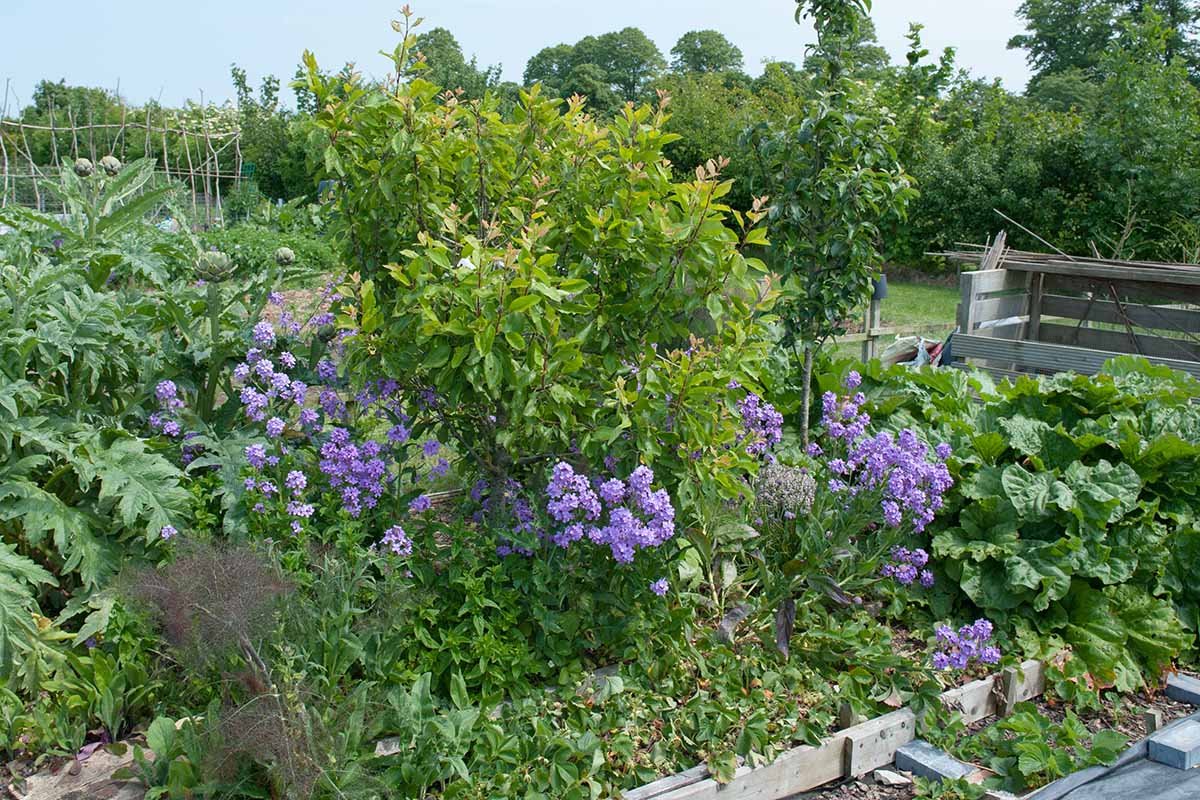
Whether enhancing taste or growth, or providing shade, it’s a smart idea to consider good and bad companion combinations before you plant.
Herbs in particular may help to decrease pest pressure, and some swear the taste of certain species is affected by others in close proximity.
If you survey your herb garden, are there any species planted near each other that aren’t doing too well? Maybe they’re sworn rivals. Tell me about your experience in the comments below!
And for more information about growing and using herbs, take a look at these guides next:
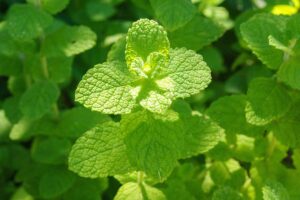
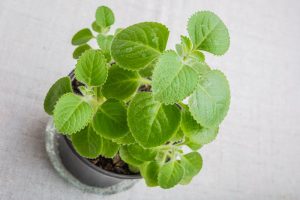

Thanks for this. I am doing companion planting with my Vegetable garden and herbs.
That’s great to hear, Mailyn, thanks for reading!
Thank you for sharing your experiences since I’m starting an herb garden in Maui